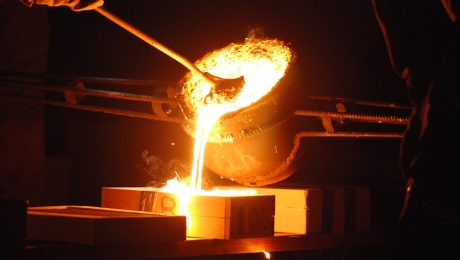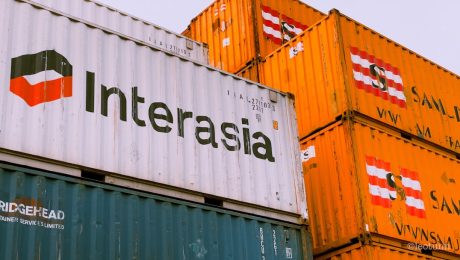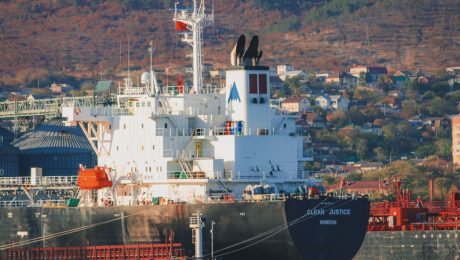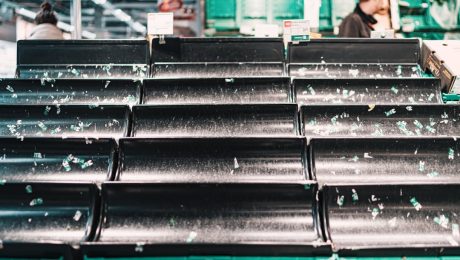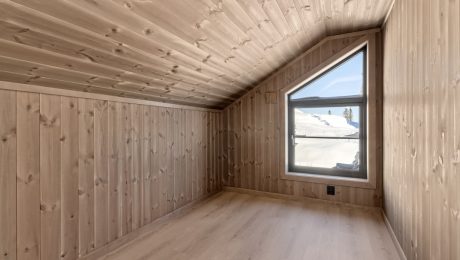body { font-family: sans-serif; line-height: 1.6; }
h1, h2, h3 { color: #333; }
img { max-width: 100%; height: auto; }
The world of engineering materials is constantly evolving, seeking stronger, lighter, and more durable solutions. In this pursuit, carbon fiber-coated steel pipes represent a significant advancement, combining the inherent strength of steel with the exceptional properties of carbon fiber. This innovative combination unlocks a range of applications across various industries, pushing the boundaries of what’s possible in construction, transportation, and energy.
Understanding the Synergy: Steel and Carbon Fiber
The core of this technology lies in the synergistic relationship between steel and carbon fiber. Steel provides the foundational strength and structural integrity, offering excellent compressive strength and resistance to buckling. However, steel’s inherent weight and susceptibility to corrosion can limit its applications. This is where carbon fiber steps in. Known for its incredibly high tensile strength-to-weight ratio, carbon fiber significantly enhances the overall performance of the steel pipe. The carbon fiber coating not only adds substantial tensile strength but also acts as a protective barrier against corrosion, extending the lifespan of the pipe significantly.
The coating process itself is crucial. Advanced techniques ensure a strong bond between the carbon fiber and the steel substrate, preventing delamination and maximizing the combined benefits of both materials. This bonding process typically involves carefully controlled application of resin and curing processes to ensure optimal adhesion and structural integrity.
Manufacturing Process: Precision and Innovation
The manufacturing of carbon fiber-coated steel pipes is a complex process demanding precision and advanced technology. It generally involves several key steps:
- Pipe Preparation: The steel pipe undergoes rigorous cleaning and surface treatment to ensure optimal adhesion of the carbon fiber.
- Carbon Fiber Layup: Layers of carbon fiber prepreg (pre-impregnated with resin) are carefully applied to the prepared steel pipe, often using automated winding or braiding techniques. The number of layers and the orientation of the fibers are precisely controlled to achieve the desired strength and stiffness properties.
- Curing: The coated pipe is then cured in a controlled environment, typically an autoclave, to solidify the resin and create a strong bond between the carbon fiber and the steel. This process involves precise temperature and pressure control to ensure optimal material properties.
- Quality Control: Rigorous quality control measures are implemented throughout the process to guarantee the structural integrity and performance of the finished product. This includes non-destructive testing methods such as ultrasonic inspection and X-ray testing.
Applications Across Industries: Expanding Horizons
The exceptional properties of carbon fiber-coated steel pipes open doors to a wide range of applications across diverse industries:
- Oil and Gas: These pipes are ideal for transporting high-pressure fluids and gases, offering superior strength and corrosion resistance compared to traditional steel pipes, leading to reduced maintenance and extended operational life.
- Construction: In high-rise buildings and infrastructure projects, these pipes can be used for structural support, offering a lightweight yet incredibly strong solution. Their enhanced durability also contributes to long-term cost savings.
- Aerospace: The lightweight nature of carbon fiber-coated steel pipes makes them suitable for aerospace applications where weight reduction is critical. Their strength and resistance to fatigue are also highly advantageous.
- Automotive: In automotive applications, these pipes can be used in high-performance vehicles, offering improved strength-to-weight ratios and enhanced durability.
- Renewable Energy: These pipes can be used in wind turbine towers and other renewable energy infrastructure, contributing to the development of more efficient and robust renewable energy systems.
Advantages Over Traditional Materials: A Clear Win
Carbon fiber-coated steel pipes offer several significant advantages over traditional materials:
- Increased Strength and Stiffness: The combination of steel and carbon fiber results in significantly higher strength and stiffness compared to steel pipes alone.
- Reduced Weight: Carbon fiber’s lightweight nature contributes to a considerable reduction in the overall weight of the pipe, making it easier to transport and install.
- Enhanced Corrosion Resistance: The carbon fiber coating acts as a protective barrier, significantly improving the corrosion resistance of the steel pipe, extending its lifespan and reducing maintenance costs.
- Improved Fatigue Resistance: Carbon fiber enhances the pipe’s resistance to fatigue, making it suitable for applications involving cyclic loading.
- Cost-Effectiveness in the Long Run: While the initial cost might be higher, the extended lifespan, reduced maintenance, and improved performance translate to significant long-term cost savings.
The Future of Carbon Fiber-Coated Steel Pipes: Innovation Continues
The field of carbon fiber-coated steel pipes is continually evolving. Ongoing research and development efforts focus on improving manufacturing processes, exploring new resin systems, and expanding the range of applications. Further advancements in material science and manufacturing techniques are expected to lead to even stronger, lighter, and more cost-effective pipes in the future. The integration of smart sensors and monitoring systems is also a promising area of development, allowing for real-time monitoring of pipe integrity and performance.
The potential applications are vast and exciting, promising to revolutionize various industries and contribute to the creation of more sustainable and efficient infrastructure.
SEO Tags:
- Carbon fiber coated steel pipes
- Carbon fiber reinforced steel pipes
- Steel pipe reinforcement
- Corrosion resistant steel pipes
- High-strength steel pipes
body { font-family: sans-serif; line-height: 1.6; }
h1, h2, h3 { color: #333; }
h1 { font-size: 2.5em; }
h2 { font-size: 2em; }
h3 { font-size: 1.5em; }
The world of steel is undergoing a significant transformation, thanks to the advent of nanotechnology. Nanomaterials, with their unique properties stemming from their incredibly small size, are revolutionizing steel surface treatments, offering enhanced performance and durability previously unattainable. This post delves into the exciting applications of nanotech in improving the properties of steel.
Enhanced Corrosion Resistance with Nanomaterials
Corrosion is a significant concern for steel structures, leading to costly repairs and potential safety hazards. Traditional methods of corrosion protection often involve thick coatings that can be bulky and less aesthetically pleasing. Nanotechnology offers a more elegant solution. Nanoparticles of materials like zinc oxide (ZnO), titanium dioxide (TiO2), and cerium oxide (CeO2) can be incorporated into coatings or applied directly to the steel surface. These nanoparticles create a dense, protective barrier that significantly inhibits the penetration of corrosive agents like oxygen and water. Furthermore, self-healing coatings incorporating nanocapsules filled with corrosion inhibitors are being developed. When the coating is damaged, these capsules release the inhibitor, repairing the defect and preventing further corrosion. This leads to extended lifespan and reduced maintenance costs for steel components in various applications, from bridges and pipelines to automotive parts.
Improving Wear Resistance through Nanocoatings
Steel surfaces subjected to friction and wear, such as those found in engine components or cutting tools, benefit greatly from nanotechnology. Nanocoatings based on diamond-like carbon (DLC), tungsten carbide (WC), or other hard nanomaterials offer exceptional wear resistance. These coatings are significantly harder and more durable than conventional coatings, resulting in extended tool life and reduced friction. The incorporation of nanoparticles into these coatings further enhances their performance by increasing their hardness, toughness, and resistance to abrasion. This translates to increased efficiency, reduced downtime, and cost savings in industries relying on high-performance steel components.
Nanotechnology for Enhanced Surface Hardness and Strength
Beyond corrosion and wear resistance, nanotechnology can directly enhance the inherent hardness and strength of steel surfaces. Techniques like ion implantation and laser surface treatment can introduce nanoparticles or modify the surface microstructure at the nanoscale, leading to significant improvements in mechanical properties. For example, incorporating carbon nanotubes or graphene into the steel matrix can create a nanocomposite material with enhanced strength and toughness. This is particularly beneficial in applications where high strength and durability are critical, such as aerospace components or high-strength steel structures.
Self-Cleaning and Antibacterial Steel Surfaces
Nanotechnology also opens up possibilities for creating self-cleaning and antibacterial steel surfaces. The incorporation of photocatalytic nanoparticles, such as titanium dioxide (TiO2), into coatings can lead to surfaces that break down organic pollutants and bacteria when exposed to UV light. This is particularly useful in applications where hygiene is paramount, such as food processing equipment, medical instruments, and building materials. These self-cleaning surfaces reduce the need for harsh cleaning agents and contribute to a more hygienic environment.
The Future of Nanotech in Steel Surface Treatments
The field of nanotechnology in steel surface treatments is rapidly evolving. Ongoing research focuses on developing more efficient and cost-effective methods of applying nanomaterials, exploring new nanomaterials with enhanced properties, and creating more sophisticated nanocomposites. The future holds the promise of even more durable, corrosion-resistant, and high-performance steel components with tailored properties for specific applications. This includes the development of smart coatings that can monitor their own condition and trigger self-repair mechanisms, as well as the integration of nanotechnology with other advanced manufacturing techniques, such as additive manufacturing (3D printing), to create complex steel components with unprecedented properties.
The integration of nanotechnology into steel surface treatments is not just an incremental improvement; it’s a paradigm shift. It promises a future where steel structures are stronger, more durable, and more sustainable, leading to significant advancements across various industries.
SEO-Friendly Tags:
#Nanotechnology #SteelSurfaceTreatment #CorrosionResistance #WearResistance #Nanocoatings
In a world of constant vibration, impact, and unforeseen shocks, the reliability of connections is paramount. From aerospace engineering to medical implants, the need for robust, shock-resistant connection systems is undeniable. This post delves into the fascinating world of these systems, exploring their diverse applications, underlying technologies, and future trends.
1. Understanding the Need for Shock-Resistant Connections
Shock and vibration are ubiquitous in many environments. These forces can lead to fatigue failure, loosening, and ultimately, catastrophic system failure. Consider the challenges faced by a satellite orbiting Earth, subjected to constant micro-vibrations and the occasional impact from space debris. Or imagine the demands placed on a connector in a medical implant, enduring the constant movement and stress of the human body. The consequences of connection failure in these scenarios can range from inconvenient to life-threatening. Shock-resistant connection systems are designed to mitigate these risks, ensuring the continued functionality and integrity of critical components under harsh conditions.
The design considerations for shock-resistant connections go beyond simple strength. Factors such as material selection, geometry, damping mechanisms, and redundancy play crucial roles in achieving optimal performance. A well-designed system will not only withstand initial impact but also resist fatigue and maintain its integrity over time.
2. Key Technologies in Shock-Resistant Connection Design
Several key technologies contribute to the resilience of shock-resistant connection systems. These include:
- Advanced Materials: High-strength alloys, composites (e.g., carbon fiber reinforced polymers), and specialized polymers offer superior strength-to-weight ratios and resistance to fatigue. Materials like titanium alloys are frequently used in aerospace applications due to their high strength and corrosion resistance.
- Damping Mechanisms: Incorporating elastomeric dampers or other energy-dissipating elements helps absorb shock energy, preventing it from being transmitted directly to the connection. These dampers can be designed to accommodate specific frequency ranges and impact levels.
- Redundancy and Fail-Safe Mechanisms: Redundant connections, backup systems, or fail-safe mechanisms ensure continued operation even if one component fails. This is particularly critical in safety-critical applications.
- Locking Mechanisms: Secure locking mechanisms prevent loosening due to vibration or shock. These can range from simple threaded fasteners with locking compounds to sophisticated bayonet-style connectors with multiple locking points.
- Specialized Geometries: Optimized geometries, such as interlocking designs or shock-absorbing profiles, can significantly enhance the system’s ability to withstand impact forces. This often involves finite element analysis (FEA) to simulate and optimize the design.
3. Applications Across Diverse Industries
The need for robust connections transcends industry boundaries. Shock-resistant connection systems find applications in a vast array of sectors, including:
- Aerospace: Connecting critical components in aircraft, spacecraft, and satellites, where reliability is paramount.
- Automotive: Securing components in vehicles that experience significant vibrations and impacts.
- Medical Devices: Creating reliable connections in implants and other medical devices that operate within the human body.
- Military and Defense: Developing resilient connections for weapons systems, vehicles, and other equipment that operate in harsh environments.
- Industrial Automation: Ensuring the reliable operation of robotic systems and other automated equipment subjected to repetitive stress.
- Seismic Engineering: Designing connections for structures and infrastructure that can withstand earthquakes and other seismic events.
4. Design Considerations and Testing
Designing shock-resistant connection systems requires a multidisciplinary approach. Key considerations include:
- Load Analysis: Accurately determining the expected loads (static and dynamic) that the connection will experience.
- Material Selection: Choosing materials with appropriate strength, stiffness, fatigue resistance, and corrosion resistance.
- Finite Element Analysis (FEA): Utilizing computer simulations to predict the behavior of the connection under various loading conditions.
- Testing and Validation: Conducting rigorous testing (e.g., shock testing, vibration testing, fatigue testing) to verify that the design meets the required performance specifications.
- Environmental Factors: Considering the effects of temperature, humidity, and other environmental factors on the connection’s performance.
5. Future Trends in Shock-Resistant Connection Technology
Ongoing research and development continue to push the boundaries of shock-resistant connection technology. Future trends include:
- Smart Connections: Integrating sensors and electronics to monitor the connection’s health and provide real-time feedback.
- Self-Healing Materials: Developing materials that can automatically repair minor damage, extending the lifespan of the connection.
- Additive Manufacturing: Utilizing 3D printing to create complex geometries and customized connection designs.
- Advanced Simulation Techniques: Employing more sophisticated simulation methods to optimize designs and reduce the need for extensive physical testing.
- Bio-inspired Designs: Drawing inspiration from nature to develop innovative connection designs with enhanced resilience.
In conclusion, shock-resistant connection systems are critical components in numerous applications, ensuring the safety and reliability of complex systems. Ongoing advancements in materials science, design techniques, and testing methodologies continue to improve their performance and expand their applications in increasingly demanding environments.
Tags: shock resistant connectors, vibration damping, connection systems, industrial connectors, aerospace connectors
body {
font-family: sans-serif;
line-height: 1.6;
}
h1, h2, h3 {
color: #333;
}
img {
max-width: 100%;
height: auto;
display: block;
margin: 20px auto;
}
Steel, the backbone of modern construction and manufacturing, requires precise and efficient cutting methods. From the rudimentary techniques of the past to the sophisticated technologies of today, the evolution of steel cutting has been remarkable. This comprehensive guide explores the diverse range of steel cutting technologies, examining their processes, applications, advantages, and limitations.
1. The Legacy of Traditional Steel Cutting: Sawing and Shearing
Before the advent of advanced technologies, sawing and shearing were the primary methods for cutting steel. Sawing, utilizing various types of saws—from hand saws to power hacksaws and band saws—offered versatility but was relatively slow and prone to producing rough edges. The choice of saw blade (high-speed steel, carbide-tipped, or abrasive) significantly impacted cutting speed and surface finish. Shearing, on the other hand, involves applying a compressive force to cut the steel along a straight line. This method is efficient for straight cuts in thinner steel sheets but is limited in its ability to handle complex shapes or thicker materials. While less precise than modern methods, traditional techniques remain relevant in certain applications, particularly where cost-effectiveness is prioritized over extreme precision.
2. The Rise of Thermal Cutting: Oxy-Fuel and Plasma Cutting
Oxy-fuel cutting, also known as flame cutting, utilizes a high-temperature flame produced by mixing oxygen and fuel gases (typically acetylene or propane). This intense heat melts and oxidizes the steel, allowing the oxygen jet to blow away the molten metal. Oxy-fuel cutting is relatively inexpensive and suitable for thicker steel plates, but it produces a wider kerf (cut width) and a rougher edge compared to other methods. Plasma cutting, a more advanced thermal process, uses a high-velocity jet of ionized gas (plasma) to cut the steel. Plasma cutting offers greater precision, faster cutting speeds, and a narrower kerf than oxy-fuel cutting. It’s effective on a wider range of steel thicknesses and can handle more intricate shapes. However, it requires more sophisticated equipment and is generally more expensive.
3. Precision Meets Speed: Laser Cutting of Steel
Laser cutting has revolutionized steel cutting, offering unparalleled precision and speed. A high-powered laser beam melts and vaporizes the steel, producing incredibly accurate cuts with minimal heat-affected zones. Laser cutting excels in creating intricate designs, fine details, and complex geometries. Different laser types (CO2 and fiber lasers) are employed depending on the material thickness and desired cutting quality. While laser cutting is more expensive than some other methods, its speed, precision, and ability to handle a wide range of steel grades make it ideal for high-volume production and intricate components.
4. Waterjet Cutting: A Gentle Giant for Precise Steel Cutting
Waterjet cutting utilizes a high-pressure jet of water, often mixed with an abrasive material like garnet, to cut steel. This method is remarkably versatile, capable of cutting a wide range of materials, including various steel grades, without the heat distortion associated with thermal cutting. Waterjet cutting offers excellent precision and can handle intricate shapes and delicate materials. It’s particularly suitable for cutting thicker steel plates where other methods might be less effective. However, it is generally slower than laser or plasma cutting.
5. Choosing the Right Steel Cutting Technology: Factors to Consider
Selecting the optimal steel cutting technology depends on several crucial factors: Material thickness: Thicker steel generally requires thermal cutting or waterjet cutting. Cut quality and precision: Laser cutting offers the highest precision, while sawing produces the roughest edges. Cutting speed: Laser and plasma cutting are generally faster than other methods. Cost: Traditional methods are often the most cost-effective, while laser cutting is typically the most expensive. Complexity of the design: Laser and waterjet cutting excel at handling complex shapes. Careful consideration of these factors ensures the selection of the most efficient and suitable steel cutting technology for the specific application.
The continuous advancements in steel cutting technologies promise even greater precision, speed, and efficiency in the future. As materials science and engineering progress, we can expect to see further innovations in this crucial area of manufacturing and construction.
SEO Keywords:
Steel cutting, laser cutting steel, plasma cutting, oxy-fuel cutting, waterjet cutting, steel fabrication
Shipping goods internationally can seem daunting, but with careful planning and the right knowledge, it can be a smooth and efficient process. This comprehensive guide will walk you through every step, ensuring your overseas shipment arrives safely and on time.
1. Choosing the Right Shipping Carrier and Method
Selecting the appropriate shipping carrier and method is crucial for successful overseas shipment planning. Several factors influence this decision, including the size and weight of your shipment, its destination, your budget, and the required delivery speed. Consider these options:
- Freight Forwarders: These companies act as intermediaries, handling all aspects of the shipment, from documentation to customs clearance. They often negotiate better rates with carriers and offer comprehensive services, making them ideal for complex shipments or those with limited shipping experience.
- Express Couriers (e.g., FedEx, DHL, UPS): These services provide fast, door-to-door delivery, ideal for urgent or high-value goods. However, they tend to be more expensive than other options.
- Ocean Freight: This is the most cost-effective method for large or heavy shipments but is significantly slower than air freight. It’s suitable for less time-sensitive goods.
- Air Freight: Faster than ocean freight, air freight is ideal for time-sensitive goods or smaller, high-value items. It’s generally more expensive than ocean freight.
Research different carriers and compare their rates, services, and transit times before making a decision. Read reviews and check their reputation for reliability and customer service.
2. Understanding and Preparing Necessary Documentation
Proper documentation is essential for a smooth overseas shipment. Incomplete or incorrect paperwork can lead to delays, fines, and even the seizure of your goods. Key documents often required include:
- Commercial Invoice: A detailed description of the goods being shipped, including quantity, value, and weight.
- Packing List: A list of the contents of each package, including weight and dimensions.
- Bill of Lading (B/L): A contract between the shipper and the carrier, acting as a receipt for the goods and outlining the terms of transport. There are different types of B/L (e.g., straight, order, negotiable).
- Certificate of Origin: Verifies the country of origin of the goods. This is often required for customs purposes.
- Import/Export Licenses (if applicable): Certain goods require specific licenses for import or export. Check with the relevant authorities in your country and the destination country.
Ensure all documents are accurate, complete, and in the correct format. Any errors can cause significant delays.
3. Packaging and Preparing Your Goods for Shipment
Proper packaging is crucial to protect your goods during transit. The type of packaging will depend on the fragility and nature of the goods. Consider these factors:
- Material Selection: Choose strong, durable materials like corrugated cardboard boxes, sturdy wooden crates, or specialized packaging for fragile items.
- Protection Against Damage: Use cushioning materials like bubble wrap, foam peanuts, or air pillows to protect goods from shocks and vibrations.
- Clear Labeling: Clearly label each package with the recipient’s address, your address, and a description of the contents. Use appropriate shipping labels provided by the carrier.
- Weight and Dimensions: Accurately weigh and measure each package to ensure correct shipping costs and avoid potential issues with the carrier.
- Hazardous Materials (if applicable): If shipping hazardous materials, follow strict regulations and use specialized packaging and labeling.
Invest in quality packaging to minimize the risk of damage during transit. Proper packaging can significantly reduce the likelihood of claims and delays.
4. Navigating Customs Regulations and Import/Export Compliance
Customs regulations vary significantly between countries. Understanding and complying with these regulations is vital to avoid delays, fines, and potential seizure of your goods. Key aspects to consider include:
- Harmonized System (HS) Codes: These codes classify goods for customs purposes. Using the correct HS code is essential for accurate customs declarations.
- Tariffs and Duties: Import duties and taxes are levied on goods entering a country. Research these costs in advance to factor them into your overall shipping budget.
- Prohibited and Restricted Goods: Certain goods are prohibited or restricted from import or export. Check the regulations of both your country and the destination country before shipping.
- Customs Broker (if needed): A customs broker can assist with navigating complex customs procedures and ensuring compliance with regulations.
- Documentation Compliance: Ensure all necessary documentation is accurate, complete, and submitted on time.
Thorough research and preparation are key to navigating customs regulations successfully. Seek professional assistance if needed.
5. Tracking and Insurance for Overseas Shipments
Tracking your shipment and securing insurance are crucial for peace of mind. Tracking allows you to monitor the progress of your shipment and anticipate any potential delays. Insurance protects you against loss or damage during transit.
- Tracking Numbers: Obtain tracking numbers from your carrier to monitor your shipment’s location and status.
- Shipment Insurance: Consider purchasing cargo insurance to protect against loss, damage, or theft during transit. The cost of insurance will depend on the value of your goods and the chosen coverage.
- Communication with Carrier: Maintain open communication with your carrier to address any issues or concerns that may arise during transit.
- Claim Process: Understand the claim process in case of loss or damage. Gather necessary documentation and follow the carrier’s procedures promptly.
Proactive tracking and insurance provide a safety net and help mitigate potential risks associated with overseas shipments.
By carefully following these steps, you can significantly increase the chances of a successful overseas shipment. Remember, thorough planning and preparation are key to a smooth and efficient process.
In today’s interconnected world, efficient logistics are the lifeblood of global commerce. Successfully navigating the complexities of moving goods across continents requires a sophisticated understanding of both maritime and land logistics, and a strategic approach to integrating them seamlessly. This post delves into key strategies for optimizing your supply chain, maximizing efficiency, and minimizing costs.
1. Optimizing Maritime Transportation: Charting a Course to Efficiency
Maritime transport remains the backbone of global trade, offering cost-effective solutions for moving large volumes of goods over long distances. However, optimizing maritime logistics requires careful planning and consideration of several factors. Choosing the right vessel type – from container ships to bulk carriers – is crucial, depending on the nature and volume of cargo. Route optimization, leveraging real-time tracking and predictive analytics to minimize transit times and avoid potential delays, is equally important. Furthermore, understanding and mitigating risks associated with weather patterns, port congestion, and geopolitical instability are essential components of a robust maritime strategy. Efficient port operations, including streamlined customs procedures and effective cargo handling, significantly impact overall transit time and cost. Finally, strategic partnerships with reliable shipping lines and agents are vital for ensuring smooth operations and mitigating potential disruptions.
2. Land Logistics: The Final Mile and Beyond
While maritime transport handles the bulk of long-distance movement, land logistics are critical for the “last mile” delivery and efficient distribution within a country. This involves a complex interplay of trucking, rail, and potentially air freight, depending on the specific needs and geographical constraints. Effective land logistics strategies hinge on factors like route planning (considering factors such as road conditions, traffic patterns, and potential delays), warehouse management (optimizing storage space, inventory control, and order fulfillment), and last-mile delivery optimization. The choice of transportation mode – trucking for flexibility, rail for bulk transport, or air freight for speed – depends on the urgency, cost sensitivity, and volume of goods. Implementing advanced technologies like GPS tracking, telematics, and route optimization software can significantly improve efficiency and transparency throughout the land logistics process. Furthermore, strong relationships with trucking companies, rail operators, and warehousing providers are essential for ensuring reliable and timely delivery.
3. Integrating Maritime and Land Logistics: A Seamless Transition
The true power of efficient logistics lies in the seamless integration of maritime and land transport. This requires careful coordination and planning at every stage of the supply chain. Effective communication and information sharing between maritime and land logistics providers are crucial to avoid delays and ensure smooth transitions. Real-time tracking and visibility across the entire journey allow for proactive problem-solving and efficient resource allocation. Utilizing a Transportation Management System (TMS) can streamline the entire process, providing a centralized platform for managing shipments, tracking progress, and optimizing routes. Furthermore, incorporating advanced technologies like blockchain can enhance transparency and security throughout the supply chain, improving traceability and reducing the risk of fraud.
4. Risk Management in Maritime and Land Logistics: Mitigating Potential Disruptions
Global trade is inherently susceptible to various risks, including geopolitical instability, natural disasters, port congestion, and theft. A robust risk management strategy is essential for mitigating potential disruptions and ensuring business continuity. This includes developing contingency plans for various scenarios, implementing robust security measures to protect goods in transit, and obtaining appropriate insurance coverage. Proactive monitoring of global events and potential disruptions is critical for identifying and addressing potential threats early on. Diversifying transportation routes and suppliers can also help to reduce reliance on single points of failure and mitigate the impact of unexpected events. Regularly reviewing and updating risk assessments is crucial to ensure the effectiveness of your risk management strategy in the face of evolving challenges.
5. Technology’s Role in Optimizing Maritime and Land Logistics
Technology is revolutionizing the logistics industry, offering innovative solutions for improving efficiency, transparency, and cost-effectiveness. The use of GPS tracking, telematics, and route optimization software significantly enhances visibility and control over shipments. Big data analytics provides valuable insights into historical trends and allows for data-driven decision-making. Blockchain technology enhances transparency and security, while artificial intelligence (AI) and machine learning (ML) can be leveraged for predictive maintenance, demand forecasting, and route optimization. The adoption of these technologies is crucial for staying competitive in today’s fast-paced and demanding global marketplace. Investing in advanced technology solutions can lead to significant improvements in efficiency, reduced costs, and improved customer satisfaction.
By implementing these strategies and leveraging the power of technology, businesses can optimize their maritime and land logistics operations, creating a truly seamless and efficient global supply chain. This leads to improved profitability, enhanced customer satisfaction, and a stronger competitive advantage in the global marketplace.
SEO Tags:
Maritime Logistics, Land Logistics, Supply Chain Management, Global Trade, Logistics Optimization
The steel industry is a cornerstone of modern construction and infrastructure, offering skilled workers rewarding careers with excellent earning potential. If you’re considering a career as a steelworker, understanding the available training programs is crucial for success. This comprehensive guide explores various pathways to becoming a qualified steelworker, covering everything from apprenticeships to specialized certifications.
1. Apprenticeships: The Traditional Path to Steelworker Expertise
Apprenticeships remain the gold standard for many aspiring steelworkers. These programs combine on-the-job training with classroom instruction, providing a well-rounded education. Apprentices typically work alongside experienced journeymen, learning practical skills and industry best practices. The duration of an apprenticeship varies, usually lasting between three to five years, depending on the specific trade and program requirements. During this time, apprentices receive progressively more responsibility and compensation as their skills develop. Many unions offer apprenticeship programs, providing structured training and support throughout the learning process. These programs often include comprehensive safety training, essential for this physically demanding and potentially hazardous profession.
2. Trade Schools and Vocational Programs: Accelerated Steelworker Training
For those seeking a faster path to entry-level positions, trade schools and vocational programs offer accelerated training options. These programs typically focus on specific skills relevant to steelworking, such as welding, rigging, and blueprint reading. The curriculum is often more condensed than apprenticeships, allowing students to complete their training in a shorter timeframe, usually within a year or less. Trade schools offer a strong foundation in the fundamentals, providing graduates with the necessary skills to seek employment as entry-level steelworkers. While these programs may not offer the same level of hands-on experience as apprenticeships, they provide a quick route to entering the workforce and gaining practical experience on the job.
3. Specialized Certifications: Enhancing Your Steelworker Skills
Beyond basic training, specialized certifications can significantly enhance a steelworker’s career prospects and earning potential. Certifications in areas like welding (e.g., AWS certifications), rigging, and specific types of steel fabrication demonstrate a high level of skill and expertise to potential employers. These certifications are often recognized industry-wide, opening doors to more lucrative job opportunities and potentially higher pay rates. The specific certifications required vary depending on the specialization, but many are offered through professional organizations and testing centers. Investing in these certifications is a worthwhile investment for any serious steelworker.
4. Safety Training: A Non-Negotiable Aspect of Steelworker Education
Safety is paramount in the steel industry. Steelworker training programs place a strong emphasis on safety procedures and practices. Comprehensive safety training is typically integrated throughout all training programs, covering topics such as fall protection, hazard recognition, personal protective equipment (PPE) usage, and emergency response procedures. This training is essential to mitigate risks and prevent workplace accidents. Many programs incorporate hands-on safety training, simulating real-world scenarios to reinforce learning and ensure trainees develop safe work habits. Continuous safety training and refresher courses are crucial throughout a steelworker’s career to stay up-to-date on best practices and evolving safety regulations.
5. Finding the Right Steelworker Training Program: A Step-by-Step Guide
Choosing the right training program is a critical decision. Begin by researching local unions, trade schools, and vocational programs offering steelworker training. Consider factors such as program duration, curriculum, cost, and reputation. Look for programs accredited by recognized industry organizations to ensure quality and credibility. Networking with experienced steelworkers can provide valuable insights and recommendations. Review program reviews and testimonials from past students to gain a better understanding of the learning experience. Finally, consider your individual learning style and career goals when making your decision. A well-chosen training program will provide you with the skills and knowledge necessary to thrive in this rewarding and challenging career.
The steel industry offers a diverse range of career paths, from structural steel fabrication to bridge construction. With the right training, dedication, and hard work, you can build a successful and fulfilling career as a steelworker. Choosing the right program is the first step towards forging your future in this essential industry.
SEO Tags:
steelworker training, steelworker apprenticeship, welding training, ironworker training, construction training
The silent workhorses of our modern infrastructure, water and gas pipes, are essential for our daily lives. But their reliability and safety depend heavily on adhering to stringent quality standards. From the materials used to the rigorous testing procedures, ensuring the integrity of these pipelines is paramount. This comprehensive guide delves into the key aspects of quality standards for both water and gas pipes, highlighting the importance of compliance and the potential consequences of negligence.
Material Matters: Selecting the Right Stuff for Water and Gas Pipes
The choice of material significantly impacts the lifespan, durability, and safety of water and gas pipes. Different materials possess varying properties, making them suitable for specific applications and environments. For water pipes, common materials include:
- Copper: Known for its durability, corrosion resistance, and bacteriostatic properties, making it a popular choice for potable water distribution.
- PVC (Polyvinyl Chloride): A cost-effective and lightweight option, PVC is resistant to corrosion but can be susceptible to damage from UV radiation and extreme temperatures.
- PEX (Cross-linked Polyethylene): Flexible and resistant to freezing, PEX is increasingly popular for its ease of installation and durability.
- CPVC (Chlorinated Polyvinyl Chloride): Offers higher temperature resistance than PVC, making it suitable for hot water applications.
- Ductile Iron: A robust material used for larger diameter water mains, offering excellent strength and durability.
Gas pipes, on the other hand, often utilize:
- Steel: A strong and durable material, often coated with protective layers to prevent corrosion.
- High-Density Polyethylene (HDPE): A flexible and lightweight material resistant to corrosion and chemicals, often used for gas distribution lines.
- Copper Tubing (Type L, M, K): Used in gas piping systems, particularly in residential applications.
The selection of the appropriate material is guided by factors such as pressure requirements, environmental conditions, and regulatory compliance.
Rigorous Testing: Ensuring Pipeline Integrity
Before pipes are installed, they undergo rigorous testing to ensure they meet the specified quality standards. These tests vary depending on the material and intended application. Common testing methods include:
- Pressure Testing: Pipes are subjected to high pressure to assess their ability to withstand operational pressures and identify any leaks or weaknesses.
- Burst Testing: This destructive test determines the maximum pressure a pipe can withstand before failure.
- Impact Testing: Measures the pipe’s resistance to damage from external impacts.
- Corrosion Testing: Evaluates the pipe’s resistance to corrosion under various environmental conditions.
- Non-destructive Testing (NDT): Techniques such as ultrasonic testing and radiographic testing are used to detect internal flaws without damaging the pipe.
Thorough testing ensures that only pipes meeting the required standards are used, minimizing the risk of failures and ensuring the safety and reliability of the water and gas distribution systems.
Regulatory Compliance: Navigating the Maze of Standards
Adherence to relevant regulations and standards is crucial for ensuring the safety and quality of water and gas pipes. These standards are established by organizations such as:
- ASTM International (ASTM): Develops and publishes numerous standards for materials, testing methods, and specifications related to pipes and fittings.
- ISO (International Organization for Standardization): Provides internationally recognized standards for various aspects of pipe manufacturing and installation.
- National and Regional Regulations: Governments at various levels set their own regulations and building codes, often referencing ASTM and ISO standards.
Understanding and complying with these regulations is essential for manufacturers, installers, and inspectors to ensure that pipelines meet the required safety and performance criteria.
Installation Best Practices: Minimizing Risks and Maximizing Lifespan
Even the highest quality pipes can fail if not installed correctly. Proper installation is critical for ensuring the longevity and safety of water and gas pipelines. Key aspects of proper installation include:
- Proper Trenching and Bedding: Ensuring the pipes are properly supported and protected from external damage.
- Correct Joint Connections: Using appropriate fittings and techniques to create leak-free connections.
- Pressure Testing after Installation: Verifying the integrity of the installed pipeline before commissioning.
- Proper Backfilling and Compaction: Protecting the pipes from settlement and external forces.
- Thorough Inspection: Regular inspections can help identify and address potential problems early on.
Following established best practices during installation minimizes the risk of leaks, failures, and other problems, extending the lifespan of the pipeline and ensuring its continued safe operation.
Maintenance and Inspection: Ensuring Long-Term Reliability
Regular maintenance and inspection are essential for ensuring the long-term reliability and safety of water and gas pipelines. This involves:
- Visual Inspections: Regularly checking for signs of corrosion, leaks, or damage.
- Leak Detection: Employing advanced techniques to detect even small leaks.
- Pressure Monitoring: Continuously monitoring pressure to identify any anomalies.
- Repairs and Replacements: Promptly addressing any detected problems through repairs or replacements.
- Preventive Maintenance: Implementing a proactive maintenance plan to prevent potential problems before they occur.
A comprehensive maintenance program significantly reduces the risk of pipeline failures and ensures the continued safe and efficient delivery of water and gas.
By adhering to stringent quality standards throughout the entire lifecycle of water and gas pipes – from material selection and testing to installation and maintenance – we can ensure the safety, reliability, and longevity of these vital components of our infrastructure.
body { font-family: sans-serif; line-height: 1.6; }
h1, h2, h3 { color: #333; }
img { max-width: 100%; height: auto; }
GloballSteel stands as a leading name in the steel construction industry, renowned for its commitment to quality, innovation, and timely project delivery. This blog post delves into a selection of their impressive reference projects, highlighting their diverse expertise and the exceptional results they achieve. We’ll explore the intricacies of their work, showcasing the engineering prowess and dedication to client satisfaction that defines GloballSteel.
High-Rise Residential Towers: Reaching New Heights with GloballSteel
GloballSteel’s experience in high-rise residential construction is unparalleled. Their expertise extends from the initial design phase, incorporating innovative steel framing solutions to optimize structural integrity and minimize construction time, to the meticulous execution of complex building systems. One notable project, the “Skyline Residences,” involved the construction of two 40-story towers, showcasing GloballSteel’s mastery of complex steel structures and their commitment to sustainable building practices. The project incorporated advanced fire-resistant coatings and energy-efficient glazing, resulting in a building that is both aesthetically pleasing and environmentally responsible. Detailed engineering analysis, rigorous quality control, and close collaboration with architects and other stakeholders ensured the project was completed on schedule and within budget, meeting the highest standards of safety and quality.
Commercial Developments: Designing for Efficiency and Functionality
GloballSteel’s portfolio boasts a diverse range of commercial projects, demonstrating their adaptability and expertise in meeting the unique needs of various sectors. The “Central Plaza” commercial complex, for example, showcased their ability to handle large-scale projects involving intricate steelwork, complex structural systems, and tight deadlines. The project incorporated a mixed-use design, including office spaces, retail outlets, and a multi-level parking garage, requiring meticulous planning and coordination. GloballSteel’s use of advanced modeling software and prefabrication techniques ensured accuracy and efficiency, reducing construction time and minimizing on-site disruptions. The result is a modern, functional, and aesthetically pleasing complex that serves as a testament to GloballSteel’s proficiency in commercial steel construction.
Industrial Projects: Robust Solutions for Demanding Environments
GloballSteel’s commitment to providing robust and reliable solutions extends to the industrial sector. Their expertise in designing and constructing structures for demanding environments is evident in projects such as the “Apex Manufacturing Plant.” This project involved the construction of a large-scale industrial facility with stringent requirements for structural strength, durability, and fire resistance. GloballSteel employed specialized steel alloys and advanced welding techniques to meet these demanding specifications. The project also incorporated innovative solutions for optimizing material usage and minimizing waste, reflecting GloballSteel’s commitment to sustainable practices. The successful completion of the Apex Manufacturing Plant showcases GloballSteel’s ability to deliver complex industrial projects on time and within budget, while adhering to the highest safety and quality standards.
Infrastructure Projects: Building the Foundation for a Stronger Future
GloballSteel’s contribution to infrastructure development is significant. Their expertise in bridge construction, railway projects, and other large-scale infrastructure projects is evident in their meticulous attention to detail and commitment to engineering excellence. The “River Bridge” project, for instance, involved the construction of a long-span steel bridge requiring advanced engineering calculations and meticulous construction techniques. GloballSteel’s use of cutting-edge technology and their commitment to safety ensured the project’s successful completion, resulting in a robust and aesthetically pleasing structure that serves as a vital link in the region’s transportation network. Their work on this project highlights their expertise in managing complex logistics and working within challenging environments.
Sustainability and Innovation in GloballSteel Projects
GloballSteel is committed to sustainable and innovative construction practices. Many of their projects incorporate sustainable materials, energy-efficient designs, and waste reduction strategies. Their use of advanced modeling software and prefabrication techniques minimizes on-site waste and reduces construction time. They also prioritize the use of recycled steel and other sustainable materials whenever possible. The company’s commitment to innovation is reflected in their ongoing research and development efforts, leading to the development of new and improved steel construction techniques that enhance both structural integrity and environmental sustainability. This commitment to sustainability is not merely a trend but an integral part of their corporate philosophy, ensuring that their projects contribute positively to the environment and the communities they serve.
GloballSteel’s diverse portfolio of reference projects showcases their exceptional capabilities in steel construction. From high-rise residential towers to complex industrial facilities and vital infrastructure projects, their commitment to quality, innovation, and sustainability is evident in every project they undertake.
Tags: GloballSteel, Steel Construction, Reference Projects, Steel Buildings, Engineering Projects
In today’s increasingly noisy world, the need for quiet spaces is paramount. Whether you’re a musician seeking the perfect recording environment, an industrial facility needing to control noise pollution, or simply someone craving a sanctuary of silence, sound-insulated steel rooms offer an unparalleled solution. These robust structures provide superior noise reduction, creating havens of tranquility amidst the chaos. This comprehensive guide delves into the world of sound-insulated steel rooms, exploring their applications, construction, benefits, and considerations.
The Science Behind Sound Insulation in Steel Rooms
The effectiveness of a sound-insulated steel room hinges on its ability to block sound transmission. Steel, being a dense material, inherently provides excellent sound insulation. However, the design goes beyond simply using steel. Effective sound insulation involves a multi-layered approach. This typically includes: a robust steel frame, double- or triple-layered steel walls with insulation in between (often mineral wool or fiberglass), specialized sound-dampening materials applied to the inner walls, and a carefully designed door and sealing system. The air gaps between layers of steel, filled with insulation, disrupt the transmission of sound waves, significantly reducing noise penetration. The mass and stiffness of the steel itself further contribute to attenuation, effectively blocking sound energy from passing through.
Applications of Sound-Insulated Steel Rooms: Beyond the Recording Studio
While recording studios are a common application, the versatility of sound-insulated steel rooms extends far beyond music production. These rooms find use in a variety of settings, including:
- Industrial settings: Controlling noise from machinery and processes, creating safe and productive work environments.
- Medical facilities: Providing quiet spaces for sensitive medical procedures or patient recovery.
- Educational institutions: Creating soundproof testing environments or quiet study spaces.
- Home studios: Offering musicians and podcasters a dedicated space for recording and production, free from outside noise interference.
- Commercial spaces: Providing private and quiet areas for sensitive conversations or confidential meetings.
The specific requirements for sound insulation will vary depending on the intended use, with industrial applications often requiring much higher levels of noise reduction than a home studio.
Construction and Design Considerations for Optimal Sound Insulation
The construction of a sound-insulated steel room is a specialized process requiring careful attention to detail. Several key factors influence the effectiveness of the sound insulation:
- Steel gauge: Thicker steel provides better sound insulation.
- Insulation type and thickness: The choice of insulation material and its thickness significantly impacts sound reduction.
- Sealant quality: High-quality sealants around doors, windows, and any penetrations are crucial to prevent sound leaks.
- Vibration isolation: Mounting the steel room on vibration isolation systems minimizes the transmission of structure-borne noise.
- Internal finishes: Sound-absorbing materials on the interior surfaces further enhance noise reduction and improve acoustics.
Professional consultation with acoustic engineers is recommended to ensure the design meets the specific sound insulation requirements of the application.
Benefits of Choosing Sound-Insulated Steel Rooms
The advantages of opting for sound-insulated steel rooms are numerous:
- Superior noise reduction: Offers significantly higher levels of sound insulation compared to traditional construction methods.
- Durability and longevity: Steel construction ensures a robust and long-lasting structure.
- Security: Steel provides inherent security, protecting the contents of the room.
- Customization: Steel rooms can be customized to meet specific size, shape, and acoustic requirements.
- Improved productivity and focus: The quiet environment enhances concentration and productivity.
The investment in a sound-insulated steel room translates to long-term benefits in terms of improved productivity, enhanced quality of work, and a more peaceful environment.
Cost and Maintenance of Sound-Insulated Steel Rooms
The cost of a sound-insulated steel room varies depending on factors such as size, specifications, and level of sound insulation required. Generally, it’s a significant investment compared to other noise reduction solutions. However, the long-term benefits often outweigh the initial cost. Maintenance is relatively low. Regular inspections for any damage to the structure or sealant are recommended. Steel is durable and resistant to damage, but any issues should be addressed promptly to maintain the effectiveness of the sound insulation.
In conclusion, sound-insulated steel rooms offer a powerful and versatile solution for achieving superior noise reduction across a wide range of applications. Their robust construction, customization options, and long-term benefits make them a worthwhile investment for anyone seeking a quiet and productive environment.
Tags: soundproof steel room, sound insulated steel room, steel room acoustics, noise reduction room, sound isolation room




